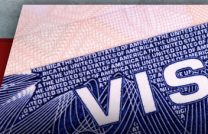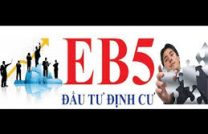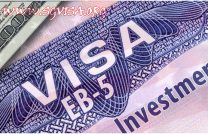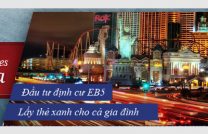VISA INVESTMENTS U.S “CLEAN AND EXPLICIT FINANCIAL SOURCES”
Dear readers! As promised in the previous article, SG VISA would like to share information related to clean and transparent finance. One of the biggest difficulties in the EB-5 settlement process for the Vietnamese community is to prove its financial viability due to a number of factors, especially the very few Vietnamese citizens who file their tax returns. Their total personal income and also many businesses declare one hundred percent for all revenues or profits. Demonstrating EB-5 investment is extremely difficult, even in many cases it is not feasible.
Under 8 C.F.R. §204.6 (e) of the US Citizenship and Immigration Service (USCIS), the definition of “capital” used for the EB-5 settlement does not include “cumulative, direct assets or indirectly, in illegal ways (such as criminal activity. “While USCIS’s definition of clean capital is relatively easy, the responsibility lies with the investor. Specifically, 8 CFR §204.6 (j) (3) requires an EB-5 investor to provide a business license, a declared tax of an enterprise or limited liability company or an individual for five years. Verification of other sources of funds or court orders proving the source of funds. In many examples, USCIS has gone far beyond the rule of law to insist that investors provide more evidence of a clean source of funds, and there have been many cases after With all the evidence in the list, USCIS still requires EB-5 to provide more evidence.

One of the biggest difficulties in the EB-5 settlement process for the Vietnamese community is to prove the financial resources …
According to SG VISA’s experience, in addition to the evidence that EB-5 is well-suited to meet USCIS requirements, EB-5 investors and attorneys need to be cautious. What has been used by USCIS in the past:
1. As noted by SG VISA, this is part of the EB-5 settlement law, which, if fulfilled correctly, will not satisfy USCIS. Regulatory requirements, including taxes for the last five years, should be considered as a milestone. And it is difficult for the Vietnamese community to prove in writing that the EB-5 capital has been accumulated and investors have paid taxes on the accumulated assets. When tax documents can not prove EB-5 investment funds, such as retired or self-employed investors over the past five years, investors should add tax documents for their years. Highest income to help prove clean financing.
USCIS regulations only require investors to demonstrate EB-5 investment capital of $ 1,000,000 or $ 500,000 if the project is within the Targeted Employment Area (TEA). Investors do not need to prove that all their assets are from a clean source.
3. Demonstration of EB-5 investment is completely the same when the investor chooses to invest directly or through a regional center (RC).
4. When proving EB-5 investment, investors should pay close attention to their business details and may have to understand the financial and accounting information of the business. Many business activities require a lot of documentation as evidence, and USCIS will insist that the investor provide all this information and evidence.
5. Difficulties in proving clean capital depend on a number of individuals, especially for investors who typically have business and cash-based income or declare low taxes. possible. In these cases, the investor needs to prepare as much evidence of income as possible to balance the EB-5 shortfall of tax returns.

… with most EB-5 investment records from Vietnam, proving clean finance is hard work and time consuming.
6. Demonstrate that the EB-5 investment fund is completely different from the requirement to prove the transfer of funds to the investment project, and the transfer must also include all documents that provide all the details. money transfer. This is quite complicated for Vietnamese investors as the government has limited laws to limit the amount of funds transferred abroad, as it is common for investors to use a number of intermediaries to transfer funds. on investment projects in USA. EB-5 does not require investors to comply with foreign currency laws when transferring funds to a project account. Derived from investor accounts, through intermediaries, and then to the project.
7. Where financial resources are not from the investor but from another entity, the goal of proving the source of funds should focus on the unit. For example, another unit gives the investor the capital, the proof of the source of funds will be given to the unit giving the investment, and a statement for the investor the amount of capital needed to be explained. There is evidence to support this investment. If the amount of investment comes from the source of the loan, the lender must also prove that his or her source of funds is clean, as if the lender is an investor, and the loan agreement and reasonable explanation should be included in the kit.
8. If the investment capital comes from the inheritance source, the beneficiary must submit the inheritance certificate. USCIS will also approve cases where the willer has accumulated assets in the inheritance decades ago and the investor can not retrieve the evidence. However, the investor must provide the will of the testator and proof of the relationship between the will and the heir.
9. Where investment capital comes from real estate, the investor and his or her lawyer should consult the purchase or sale documents of the real estate to prove the source of the investment. If the property was purchased in the past seven years, the application should include a transfer document, a valuation and purchase contract, and a proof of transfer. However, if the deal or sale contract has been in place for decades, it is likely that documents and evidence for the sale will no longer be kept. USCIS does not have a clear standard on the amount of time a real estate is transferred or sold prior to the EB-5 settlement, which only uses the “reasonableness” criterion for approval. file.
10. If the investment comes from the sale of stocks or shares of the company, the company’s tax return and invoices and sales contracts for the shares or shares of the company will suffice. However, if a recent sale of shares and shares is made, USCIS may require the investor to provide evidence of funds to purchase such shares or shares.
11. Investment capital may come from the United States or abroad. However, if the investor accrues this amount from illegal work in the US, USCIS may refuse the application.
12. If the investor does not have enough original documents to submit to USCIS, the investor should provide a third party sworn statement or CV to fill in the missing documents. The goal is to help investors draw a picture that convinces USCIS that the information and evidence of clean financing provided to USCIS is truthful and reliable.
13. Investors should provide an individual report and source of funds. The statement will include reliable evidence and sources to assist the USCIS officer in determining the most appropriate and appropriate decision for the case, rather than solely for understanding and non-professional knowledge. they.
14. For those cases where the investor can not prove that the investment amount is extracted from several tax returns or sales contracts, the investor may provide documents and evidence that they have accumulated the initial capital. over the years. Investors need to demonstrate their knowledge and expertise to obtain income from formal business or employment, and they have accumulated this amount of capital after the necessary expenses for life. day. Evidence of the accumulation and saving of this capital is also important.
The experience of SG VISA shows that, with most EB-5 investment records from Vietnam, proving clean finance is the most time consuming and laborious, because of the evidence Taxes and sales contracts are largely nonexistent or non-custodial. At times, investors have been trying not to file tax returns or filings for business activities that are now the property they want to use as EB-5 residential investment funds. The best way for investors to be more secure about their clean finances is likely to be approved by USCIS through the assessment of the consulting firm and attorney.
In the next series, SG VISA would like to share with you how to evaluate a project capable of creating 10 full-time jobs (for citizens, permanent residents, and legal residents in the area). ) for each investor to meet USCIS regulations. If you have other questions, please contact SG VISA for more detailed and detailed advice.
Huy Ton & SG VISA Team









